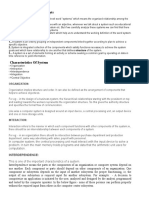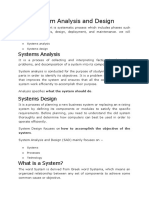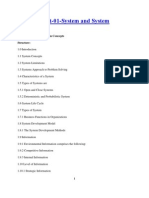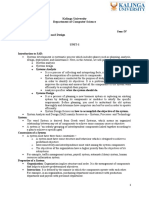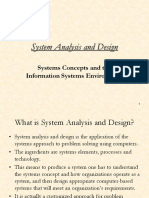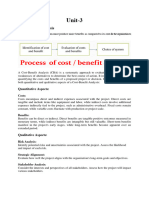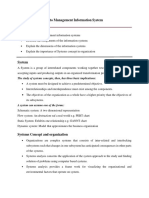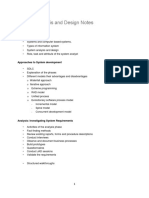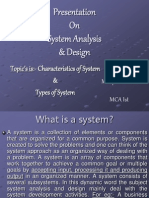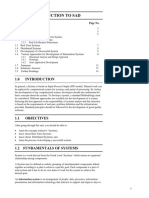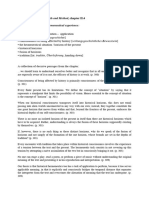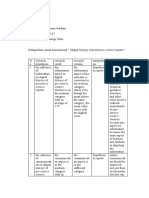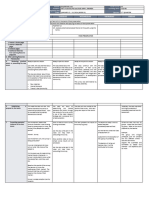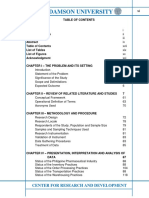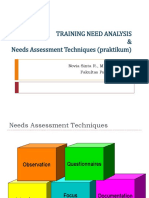100% found this document useful (1 vote)
491 views5 pagesSystem Analysis, Design and Development
The document provides an overview of systems concepts including:
1. A system is defined as an organized relationship among functioning units or components designed to achieve specific objectives. Key implications are that a system must achieve predetermined objectives, have interdependent components, and prioritize organizational objectives over subsystem objectives.
2. Common characteristics of systems include organization, interaction, interdependence, integration, and central objectives.
3. Elements of a system include inputs, outputs, processors that transform inputs to outputs, control, feedback, environment, and boundaries.
4. Systems can be physical or abstract, open or closed, and include man-made information systems like formal, informal, and computer-based systems.
Uploaded by
Sakibul HudaCopyright
© Attribution Non-Commercial (BY-NC)
We take content rights seriously. If you suspect this is your content, claim it here.
Available Formats
Download as DOCX, PDF, TXT or read online on Scribd
100% found this document useful (1 vote)
491 views5 pagesSystem Analysis, Design and Development
The document provides an overview of systems concepts including:
1. A system is defined as an organized relationship among functioning units or components designed to achieve specific objectives. Key implications are that a system must achieve predetermined objectives, have interdependent components, and prioritize organizational objectives over subsystem objectives.
2. Common characteristics of systems include organization, interaction, interdependence, integration, and central objectives.
3. Elements of a system include inputs, outputs, processors that transform inputs to outputs, control, feedback, environment, and boundaries.
4. Systems can be physical or abstract, open or closed, and include man-made information systems like formal, informal, and computer-based systems.
Uploaded by
Sakibul HudaCopyright
© Attribution Non-Commercial (BY-NC)
We take content rights seriously. If you suspect this is your content, claim it here.
Available Formats
Download as DOCX, PDF, TXT or read online on Scribd
/ 5




